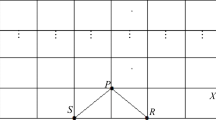Abstract
The sheath current causes cable faults and electroshocks in the high-voltage underground cable lines. Thus, the sheath current must be determined before a new high-voltage cable line is installed to take the required precautions against the sheath current effects. In this study, PSCAD/EMTDC is used for simulation of high-voltage underground cable line to examine the sheath current. The sheath current is forecasted with artificial neural network (ANN) by using the results of simulation studies, and differential evolution algorithm (DEA), genetic algorithm (GA), clonal selection algorithm (CSA), hybrid DEA-CSA, artificial bee colony (ABC), particle swarm optimization (PSO) and inertia weight PSO (iPSO) are used to find the best weights of ANN. The sheath current formation factors which are obtained in PSCAD/EMTDC are used as inputs of ANN. It is seen at the end of simulation studies that many factors affect the formation of the sheath current, so Pearson correlation is used to determine the most effective sheath current formation factors for inputs of ANN. In the literature, three types of bonding methods are used to reduce the sheath current and voltage, but these methods are not sufficient to reduce both sheath current and the sheath voltage simultaneously. Therefore, in this study, the sectional solid bonding method is developed as new bonding method to reduce the sheath voltage and current in this study. When the sectional solid bonding is used, the sheath voltage can be reduced under touch voltage, and the sheath current can be reduced under the desired value.










Similar content being viewed by others
References
Jung CK, Lee JB, Kang JW (2007) Sheath circulating current analysis of a cross-bonded power cable systems. J Electron Eng Technol 2:320–328
Gouda OE, Farag AA (2012) Factors affecting the sheath losses in single-core underground power cables with two-points bonding method. Int J Electron Comput Eng 7:7–16
Moutassem W, Anders GJ (2010) Calculation of the eddy current and hysteresis losses in sheathed cables inside a steel pipe. IEEE Trans Power Deliv 25:2054–2063
Gordon GL, Yang CF, Huang MH, Su CT (2008) Optimal connection of power transmission lines with underground power cables to minimize magnetic flux density using genetic algorithms. IEEE Trans Power Deliv 23:1553–1560
Jung CK, Lee JB, Kang JW, Wang XH, Song YH (2005) Sheath current characteristic and its reduction on underground power cable systems. In: IEEE 2005 power engineering society general meeting, San Francisco, USA, pp 2562–2569
Gouramanis KV, Kaloudas CG, Papadopoulos TA, Papagiannis GK, Stasinos EK (2011) Sheath voltage calculations in long medium voltage power cables. In: IEEE 2011 Trondheim power tech Trondheim, Norway, pp 1–7
Chen X, Wu K, Cheng Y, Yan L (2007) Sheath circulating current calculations and measurements of underground power cables. Jicable 1:1–4
Yaghini M, Khoshraftar M, Fallahi M (2013) A hybrid algorithm for artificial neural network training. Eng Appl Artif Int 26:293–301
Demetrios AT (2006) Protection of high-voltage AC cables. In: Proceedings of power systems conference. Advanced metering, protection, control, communication, and distributed resources, College Station, TX, pp 48–61
Gudmundsdottir US, Gustavsen B, Bak CL, Wiechowski W (2011) Field test and simulation of a 400-kV cross-bonded cable system. IEEE Trans Power Deliv 26:1403–1410
Oshaba AS, Ali ES, Abd-Elazim SM (2015) PI controller design using artificial bee colony algorithm for MPPT of photovoltaic system supplied DC motor-pump load. Neural Comput Appl. doi:10.1007/s00521-015-2067-9
Akbal B, Ürkmez A (2013) The parallel resonance impedance detection method for parameter estimation of power line and transformer by using CSA, GA and PSO. Turk J Electr Eng Comput Sci 24:12–23
Akbal B, Aydın M (2014) DE-Otsu method to eliminate ice load effect. J Appl Environ Biol Sci 4:423–427
Akbal B, Urkmez A (2013) PSO and inertia weight to determine parallel resonance power in electrical networks. In: 5th international conference on electronics, computers and artificial intelligence, Pitesti, Romania, pp 13–18
Karaboga D, Basturk B (2007) A powerful and efficient algorithm for numerical function optimization: artificial bee colony (ABC) algorithm. J Glob Optim 39:459–471
Benato R (2009) Multiconductor analysis of underground power transmission systems: EHV AC cables. Electr Power Syst Res 79:27–38
Ruiz JR, Garcia A, Morera XA (2007) Circulating sheath currents in flat formation underground power lines. In: 2007 international conference on renewable energies and power quality, Seville, Spain, pp 1–5
Zhonglei L, Du BX, Wang L, Yang C, Liu HJ (2012) The calculation of circulating current for the single-core cables in smart grid. In: IEEE 2012 innovative smart grid technologies—Asia, Tianjin, China, pp 1–4
Czapp S, Dobrzynski K, Klucznik J, Lubosny Z (2014) Calculation of induced sheath voltages in power cables—single circuit system versus double circuit system. J Inf Contr Manage Syst 12:113–123
Author information
Authors and Affiliations
Corresponding author
Ethics declarations
Conflict of interest
There is no any conflict of interest in this study.
Electronic supplementary material
Below is the link to the electronic supplementary material.
Rights and permissions
About this article
Cite this article
Akbal, B. Applications of artificial intelligence and hybrid neural network methods with new bonding method to prevent electroshock risk and insulation faults in high-voltage underground cable lines. Neural Comput & Applic 29, 97–105 (2018). https://doi.org/10.1007/s00521-017-2860-8
Received:
Accepted:
Published:
Issue Date:
DOI: https://doi.org/10.1007/s00521-017-2860-8




